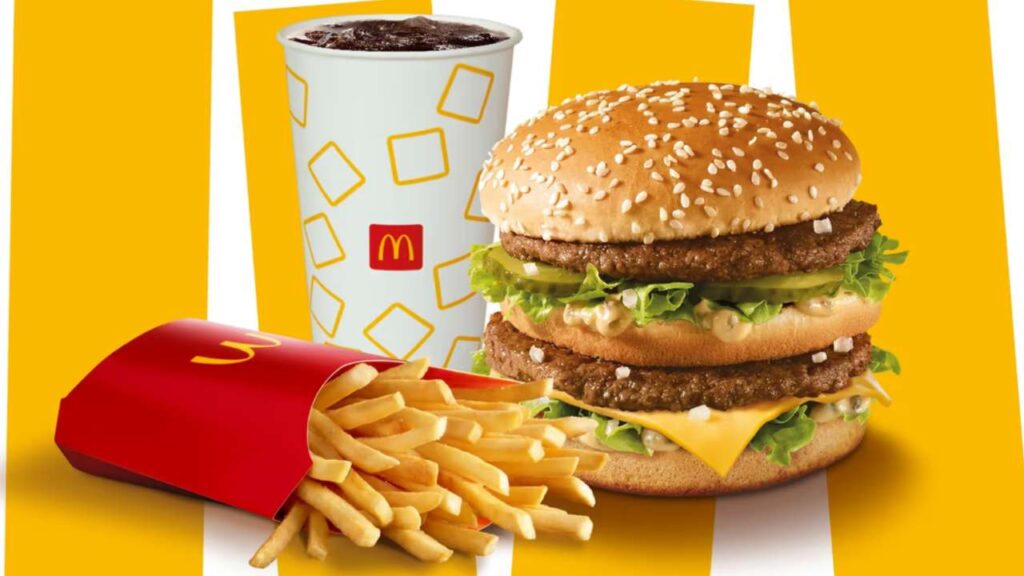McDonald‘s, often simply referred to as “McD,” is a fast-food giant that has left an indelible mark on the global culinary landscape. Established in 1940 by Richard and Maurice McDonald in San Bernardino, California, the company has grown from a small barbecue restaurant to one of the most recognizable and influential brands worldwide. This article explores the journey, impact, and controversies surrounding McDonald’s, highlighting its evolution from a humble eatery to an international cultural phenomenon.
The Birth and Evolution:
McDonald’s began as a modest drive-in restaurant, introducing the concept of a limited menu with a focus on quick-service. The brothers revolutionized the food industry by creating a systematic assembly-line process, reducing cooking time and ensuring consistency in their offerings. In 1954, Ray Kroc, a Multimixer milkshake machine salesman, entered the scene, eventually acquiring the franchise rights and transforming McDonald’s into a global franchise powerhouse.
The Golden Arches and Iconic Menu:
The iconic Golden Arches, a symbol of McDonald’s, first appeared in 1961 and has become one of the most universally recognized logos. The restaurant’s menu, initially centered around burgers, fries, and shakes, expanded over the years to cater to diverse tastes and cultural preferences. McDonald’s introduced iconic items such as the Big Mac, Chicken McNuggets, and the Egg McMuffin, contributing to the brand’s popularity and success.
Global Expansion and Cultural Impact:
McDonald’s took the concept of fast food to a new level by venturing beyond American borders. The first international McDonald’s opened in Canada in 1967, marking the beginning of a global expansion that would eventually reach every continent. The restaurant adapted its menu to suit local tastes, incorporating regional flavors while maintaining its core offerings. This localization strategy enabled McDonald’s to penetrate diverse markets and cater to the culinary preferences of different cultures.
The company’s global influence extends beyond its menu. McDonald’s has become a cultural touchstone, influencing everything from popular music to movies. The Happy Meal, introduced in 1979, solidified McDonald’s as a family-friendly establishment, making it a go-to destination for children and parents alike. The fast-food giant’s ubiquity in popular culture has made it a symbol of globalization, with McDonald’s outlets often serving as meeting points for people around the world.
Controversies and Challenges:
While McDonald’s has achieved unparalleled success, it has not been immune to controversies. The company has faced criticism for its contribution to the rise in obesity rates, with some pointing fingers at its high-calorie, low-nutrient menu. Environmental concerns have also been raised, particularly regarding packaging waste and the environmental impact of the beef industry, which McDonald’s heavily relies on for its signature burgers.
Labor practices and workers’ rights have been persistent issues for McDonald’s. The company has faced protests and legal challenges related to low wages, inadequate working conditions, and allegations of anti-union practices. These issues have sparked public debates about corporate responsibility and the treatment of employees within the fast-food industry.
In response to these challenges, McDonald’s has implemented various initiatives to address environmental concerns, improve nutritional transparency, and enhance labor practices. The company’s efforts to source sustainable ingredients and reduce its environmental footprint reflect a commitment to adapt and respond to evolving societal expectations.
Innovation and Adaptation:
McDonald’s has consistently demonstrated its ability to innovate and adapt to changing consumer preferences. The introduction of the drive-thru in the 1970s and the implementation of technology-driven services, such as online ordering and mobile payments, showcase the company’s commitment to staying at the forefront of the fast-food industry.
The McFlurry, launched in 1997, is an example of McDonald’s successful innovation in the dessert category. Collaborations with popular brands, such as the McFlurry partnership with Oreo, have kept the menu dynamic and appealing to a wide audience. The constant evolution of offerings and services has helped McDonald’s maintain its relevance in an ever-changing market.
Community Engagement and Social Responsibility:
In recent years, McDonald’s has intensified its focus on community engagement and social responsibility. The Ronald McDonald House Charities, established in 1974, provide support to families with seriously ill children, showcasing the company’s commitment to giving back to the communities it serves. McDonald’s has also made strides in incorporating sustainable practices, such as committing to source 100% of its guest packaging from renewable, recycled, or certified sources by 2025.
Conclusion:
McDonald‘s has undeniably left an indelible mark on global cuisine, shaping the fast-food industry and becoming a symbol of American culture worldwide. From its humble beginnings in San Bernardino to its current status as a global culinary icon, McDonald’s has weathered controversies, adapted to changing consumer preferences, and embraced innovation.
As the company continues to navigate challenges and evolve, its impact on the culinary landscape and popular culture remains significant. McDonald’s, with its golden arches and diverse menu, reflects not only the evolution of fast food but also the global interconnectedness of societies through shared culinary experiences. Love it or loathe it, McDonald’s is undeniably a cultural phenomenon that has left an enduring imprint on the way we eat and interact with food.
